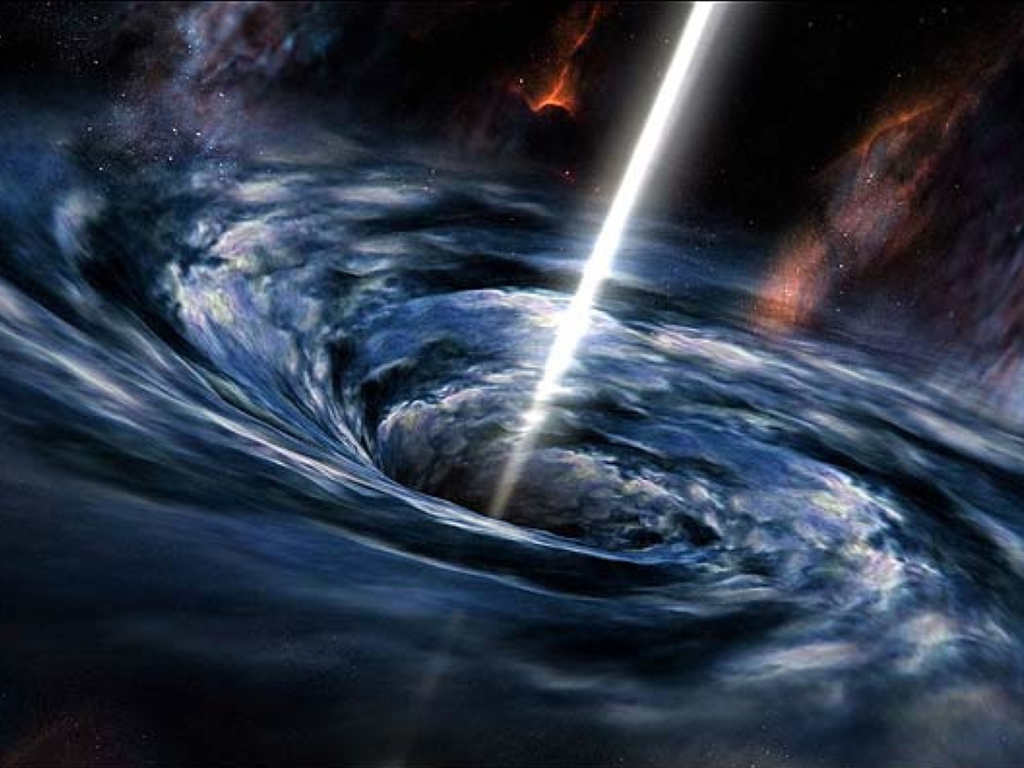Overview
The Limit of a Limitless Universe
Conclusion
The Boundary of the Universe
Below is a depiction
of what an object orbiting a black hole would observe as it
falls into a black hole:

http://casa.colorado.edu/~ajsh/bhi_gif.html
The blue, yellow, and green circles are
nearby stars. The red lines on the sphere represent the
event horizon. As you cross the event horizon, the white
lines represent your point of entry into the event horizon.
This website did a really good job depicting the general
relativistic distortions of the objects nearby a black hole
as one approaches the event horizon but failed to account
for the special relativistic distortions that we mentioned
in the previous section.
As we approach the event horizon, time
would speed up at faster and faster rate. The nearby stars
would either explode in a supernova or be sucked into the
black hole itself, but we would not notice these changes as
they would happen instantaneously. What you would see
depends on the future of the universe, whether it will
continue to expand or collapse under its own gravitational
force into a Big Crunch.
If the universe keeps expanding, we would
see the stars in the universe contract into points in a
smaller and smaller circle and eventually dim away as we
approach the event horizon. If the universe stops expanding
and accelerates inward, we would see the stars dimming at
first as the universe continue to expand, and then the stars
would accelerate back towards. We would see little dazzling
sparks as stars explode into supernovas and galaxies collide
into each other. Then many of them will also disappear as
they enter other black holes. Then we would see major light
distortion as black holes start colliding into each other
and with the black hole we are entering. All of this would
happen within the few seconds it takes for us the reach the
event horizon. Remember that time does not change for us as
we approach the event horizon, the event horizon is simply
the point at which we reach the end of time.



